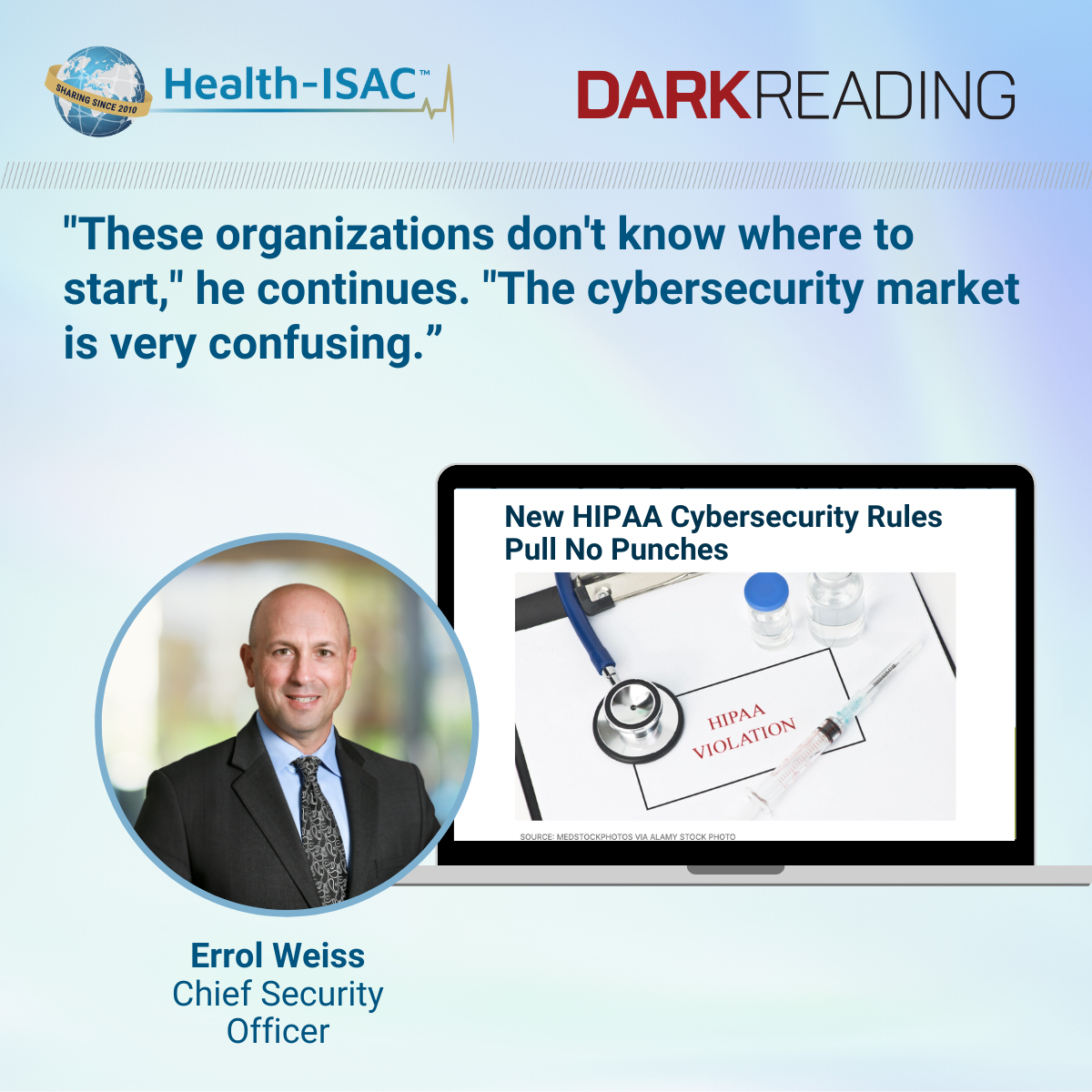New HIPAA Cybersecurity Rules Pull No Punches

Healthcare organizations of all shapes and sizes will be held to a stricter standard of cybersecurity starting in 2025 with new proposed rules, but not all have the budget for it.
Since the beginning, HIPAA has always been the best, yet insufficient, regulation dictating cybersecurity for the healthcare industry.
“[There’s] a history of the focus being in the wrong place because of the way HIPAA was laid out in the mid-1990s,” says Errol Weiss, chief information security officer (CISO) of the Healthcare Information Sharing and Analysis Center (Health-ISAC). “At the time, there was this big push to transfer medical and health records to the electronic medium. And with the advent of the HIPAA regulations, it was all about protecting patient privacy but not necessarily securing those records.”
HIPAA’s focus on privacy limited its ability to address more diverse cybersecurity threats in the 2010s, particularly ransomware. Meanwhile, instead of using it as a baseline for developing a robust security posture, organizations tended to treat HIPAA more as a set of boxes to check. “It ended up driving budgets toward compliance and not necessarily security. And in the past five or six years, we’ve seen what happens in an environment that’s not properly secured, not properly tied down, not properly backed up, when they’re hit by ransomware,” Weiss says.
“Even if they’re already following all the NIST controls,” Dispersive’s Pingree estimates, implementing the new HIPAA security rules “could cost as low as $100,000 for a small doctor’s office, or it could be many millions if you’re a big medical group.”
One possible way stretched healthcare organizations might navigate all these new rules and their associated costs is with an outsourced, virtual chief information security officer (vCISO), according to Weiss. Because “it’s not just about buying the technology. It’s also about recruiting and retaining the cybersecurity expertise that you need to run,” he says.
“These organizations don’t know where to start,” he continues. “The cybersecurity market is very confusing. There are a lot of players. There are a lot of solutions. So if you have $100 to spend on cybersecurity, where do you spend that? They need help to be able to figure all of that out. And I think something like a virtual CISO can help implement a strategy, and then be around on a virtual basis — to check in, to be a resource for that organization when they have questions and they need some help. It seems like a decent model for these small rural hospitals that could not necessarily justify or hire a full-time CISO.”
Read the full article in Dark Reading. Click Here
- Related Resources & News
- HSCC Aiming to Identify Healthcare Workflow Chokepoints
- President Trump extends national emergency over cyber threats for another year
- How HTM Staff Can Prepare for the Proposed HIPAA Security Rule Changes
- 2025 Newsletter- April
- Health-ISAC Hacking Healthcare 3-21-2025
- Potential Terror Threat Targeted at Health Sector – AHA & Health-ISAC Joint Threat Bulletin
- New Cybersecurity Policies Could Protect Patient Health Data
- CyberWire Podcast: PHP flaw sparks global attack wave
- Health-ISAC Hacking Healthcare 3-14-2025
- HSCC Aiming to Identify Healthcare Workflow Chokepoints
